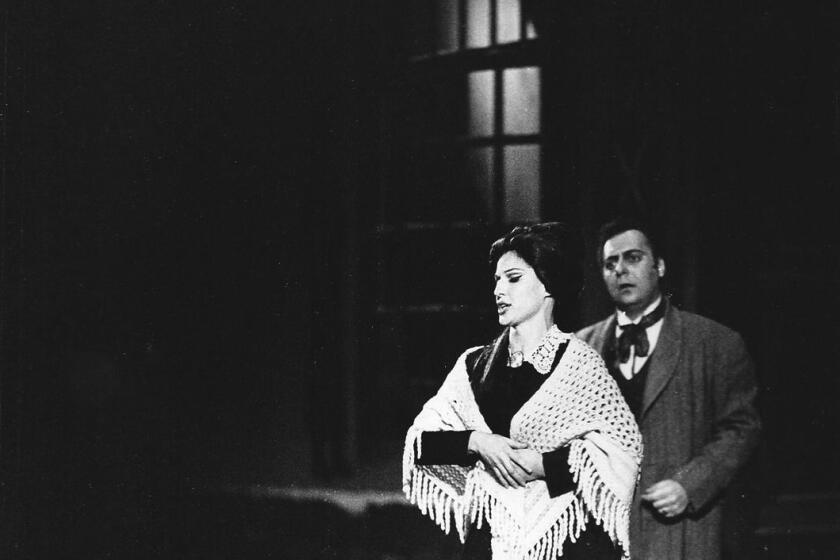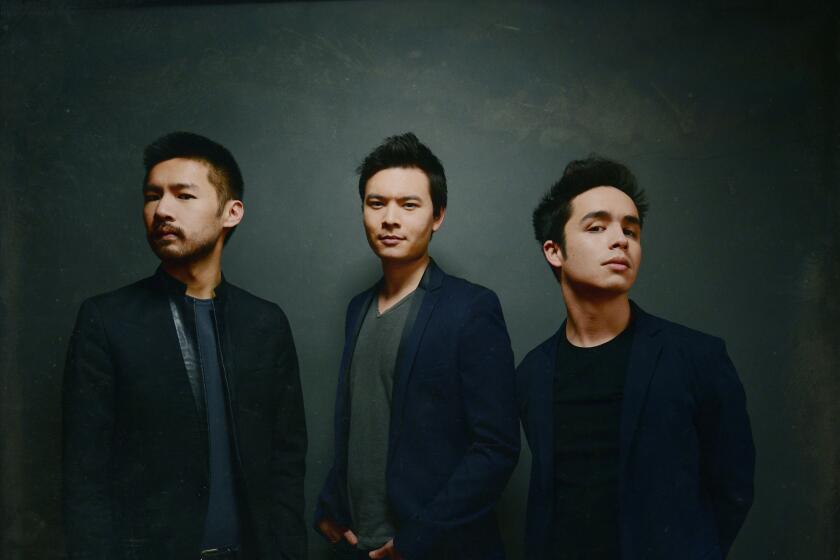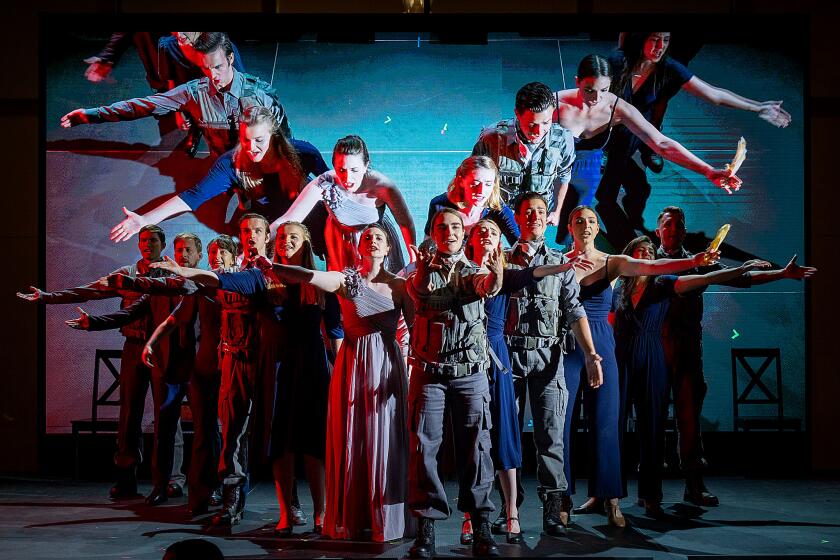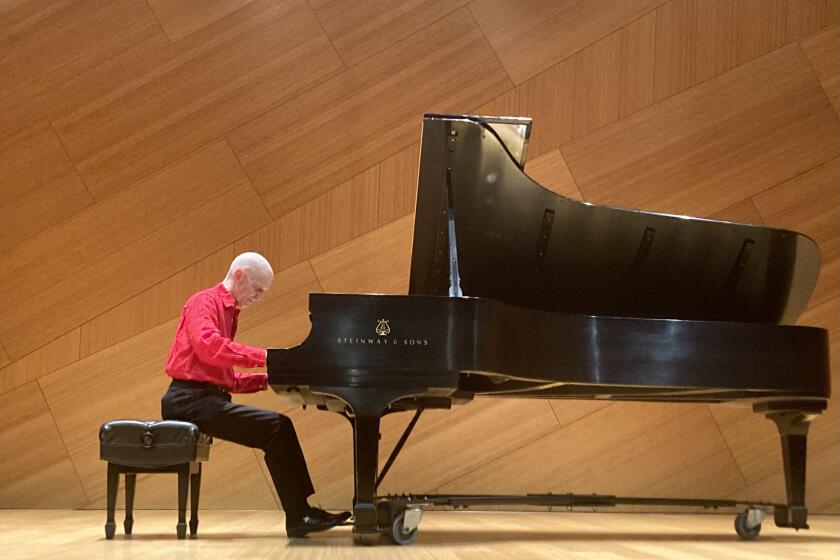Review: Jader Bignamini leads San Diego Symphony in sparkling concert of Italian music
The San Diego Symphony sparkled like spumante Saturday at the Jacobs Music Center’s Copley Symphony Hall. Italian conducting sensation Jader Bignamini led the orchestra in a scintillating program of music by his countrymen Respighi, Rossini and Martucci, along with some razzle-dazzle from Rimsky-Korsakov.
Rimsky-Korsakov’s “Capriccio Espagnol” and Respighi’s “La Boutique Fantasque” and “Pines of Rome” gave many of the orchestra’s principal players opportunities to shine. In keeping with the rhythmic concerns of the “It’s About Time” festival, the Symphony’s percussion section played an invaluable role in those three works and punctuated Rossini’s “William Tell Overture” with musical depictions of thunder and crashing artillery.
Timpanist Ryan DiLisi and percussionists Gregory Cohen, Andrew Watkins, and Erin Douglas Dowrey relished their moments in these four works: snare drum rolls, snapping castanets and jangling tambourines in “Capriccio Espagnol”; the timpani ostinato and the roar of the tam-tam in the last section of “Pines of Rome”; xylophone and glockenspiel work in “La Boutique Fantasque.”
Conductor Jader Bignamini was a fine technician, keeping rhythms crisp and the ensemble coordinated. He is one of those stiff-backed conductors who let their arms and face do all the work; the sensitivity and excitement with which the orchestra responded illustrated the communication and cooperation he elicited from the musicians. Indeed, there was a fine sense of rubato in many places that added a rhythmic expressivity not encountered in most of the other conductors we’ve heard here for the San Diego Symphony this season.
All of the works on the program were small-scale structures; it remains to be heard what Bignamini could do with larger forms. However, if he brings the same exhilaration and control to symphonies and concertos, he would make a marvelous new music director for the orchestra.
The music of Giuseppe Martucci is rarely encountered in the United States these days, but Italian musicians revere this Romantic-era composer. While most of his contemporaries in Italy focused their efforts on opera, Martucci was devoted to instrumental music and developed his own identity within the Romantic tradition. His Symphony no. 2 or Piano Concerto no. 2 occasionally suggest Brahms or Elgar for brief moments, Mendelssohn or Schumann in others, but those works — which merit programming today — really don’t sound like any other late 19th-century composer.
His best known composition is the 1901 orchestration of his piano work, the “Notturno op. 70, No. 1.” After a tentative opening bar, its melody blooms, a sinuous line with gently unpredictable rhythms. It was a lilting piece of night music that flourished with Bignamini’s sensitive leadership. Invaluable contributions were made by clarinetist Sheryl Renk’s yearning solos and Benjamin Jaber’s expressive horn.
Many instrumental solos stood out throughout the program. My favorites were:
- Cellist Yao Zhao in the opening of “William Tell,” gorgeously accompanied by four more cello solos and two double basses supplying the harmonies for Zhao’s rhapsodic solo.
- The pastoral call and response between English horn (Andrea Overturf) and flute (Rose Lombardo) in the sunrise section of “William Tell.”
- In “Capriccio Espagnol,” Sheryl Renk’s clarinet runs and melodic solos; Jeff Thayer’s flashy violin playing; and the contributions of Overturf and Jaber in the variations section.
- The low woodwind rumblings in the Appian Way section of “Pines of Rome” and the triumphant antiphonal brass calls from the six players in the balcony.
Bravissimo!
Hertzog is a freelance writer.
Get U-T Arts & Culture on Thursdays
A San Diego insider’s look at what talented artists are bringing to the stage, screen, galleries and more.
You may occasionally receive promotional content from the San Diego Union-Tribune.





